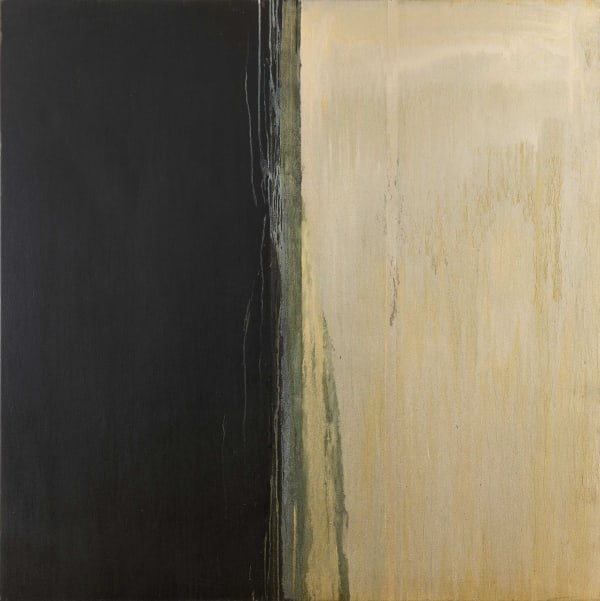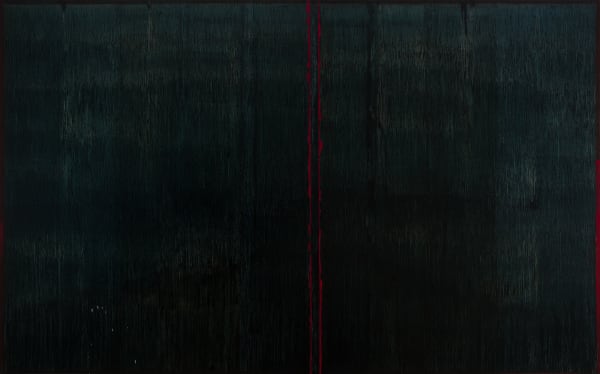For decades, Pat Steir has been an important fixture in the New York art scene. With her specific concept-oriented approach Steir can be seen in the tradition of abstract painting à la Jackson Pollock, a heritage which she combines with her expertise in Chinese painting traditions. Her famous Waterfalls, which the artist developed in the late 1980s, have been interpreted as an homage to Pollock reinventing the drip as a means for the paint to paint a picture of itself. Since around 2000 Steir has developed an ever more subtle method using the process of dripping to create a delicate interwoven curtain-like surface texture which has been the basis for many paintings of the years to come. Large-scale works like Dusk (2007) and The Dark (2007), which are on view in this exhibition, are examples for this technique, while works like So Long Black, Silver and White (2009) and So Long Black, Red, Yellow and Blue (2009) take this approach into her so-called Split Surface Paintings which pay homage to Barnett Newman and have been a prominent feature among her works of the last decade.
Beginning in 1971, Pat Steir has executed numerous wall installations in museums, institutions and art galleries around the world including prestigious venues like the Whitney Museum, Brooklyn Museum, the Irish Museum of Modern Art, Grazer Kunstverein and the Musée d’art contemporain de Lyon. Self Portrait is Steir’s third wall drawing at Galerie Thomas Schulte and one of her most successful wall projects. It was first realized at the New Museum of Contemporary Art in 1987 and subsequently presented, in modified form, in venues across the world. By presenting a multitude of facial features taken from Renaissance sample books Steir’s Self Portrait clearly eschews any conventional kind of self-regard, having instead to do with Buddhist notions of non-self. The artist describes the work “as if the walls of the room were the inside of the skin of a person, the space inside your head and body, rather than an inventory of surface appearances observed from the outside.” By having a team of other artists and students do the actual drawing, the artist’s touch is deliberately depersonalized.











